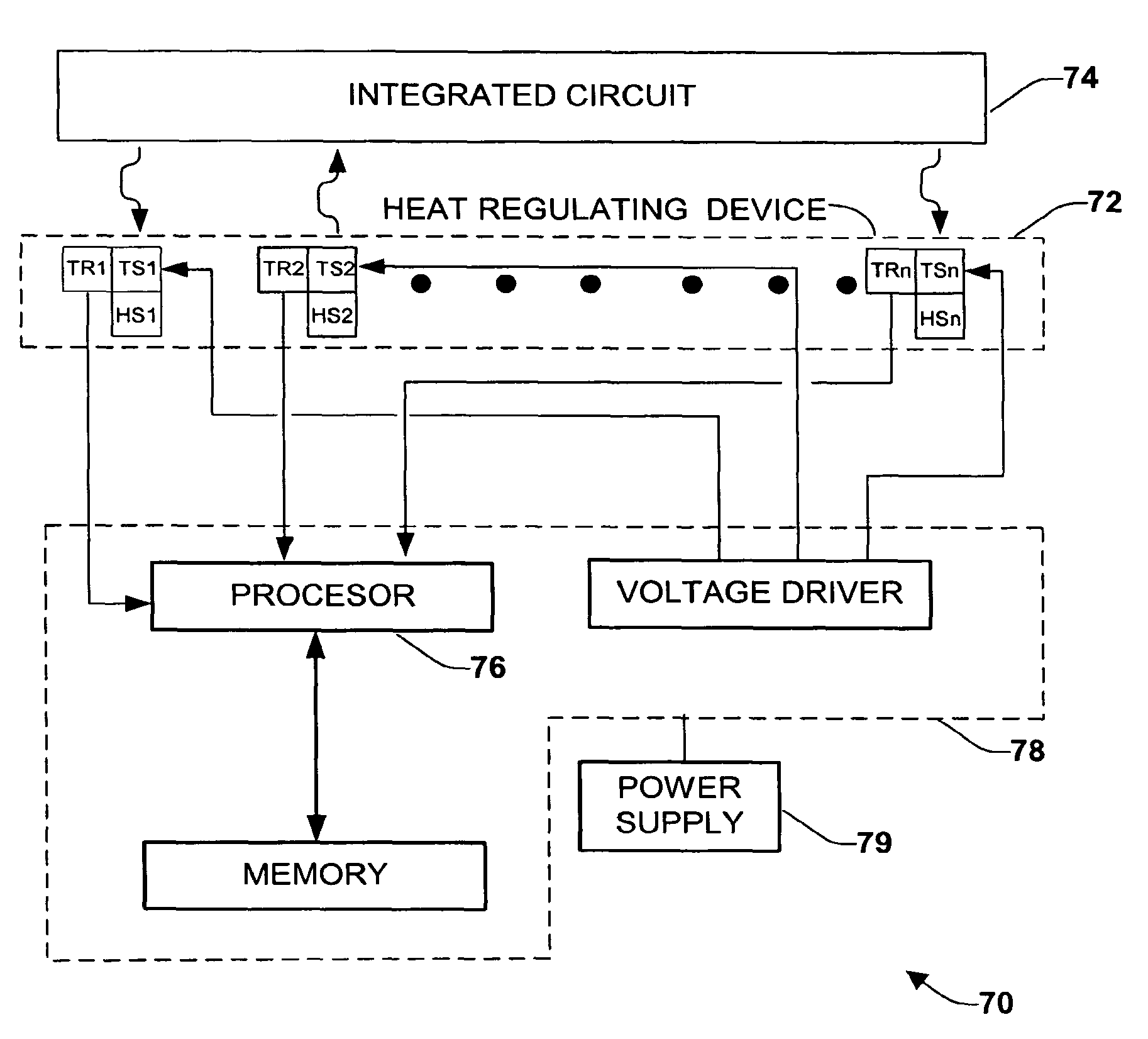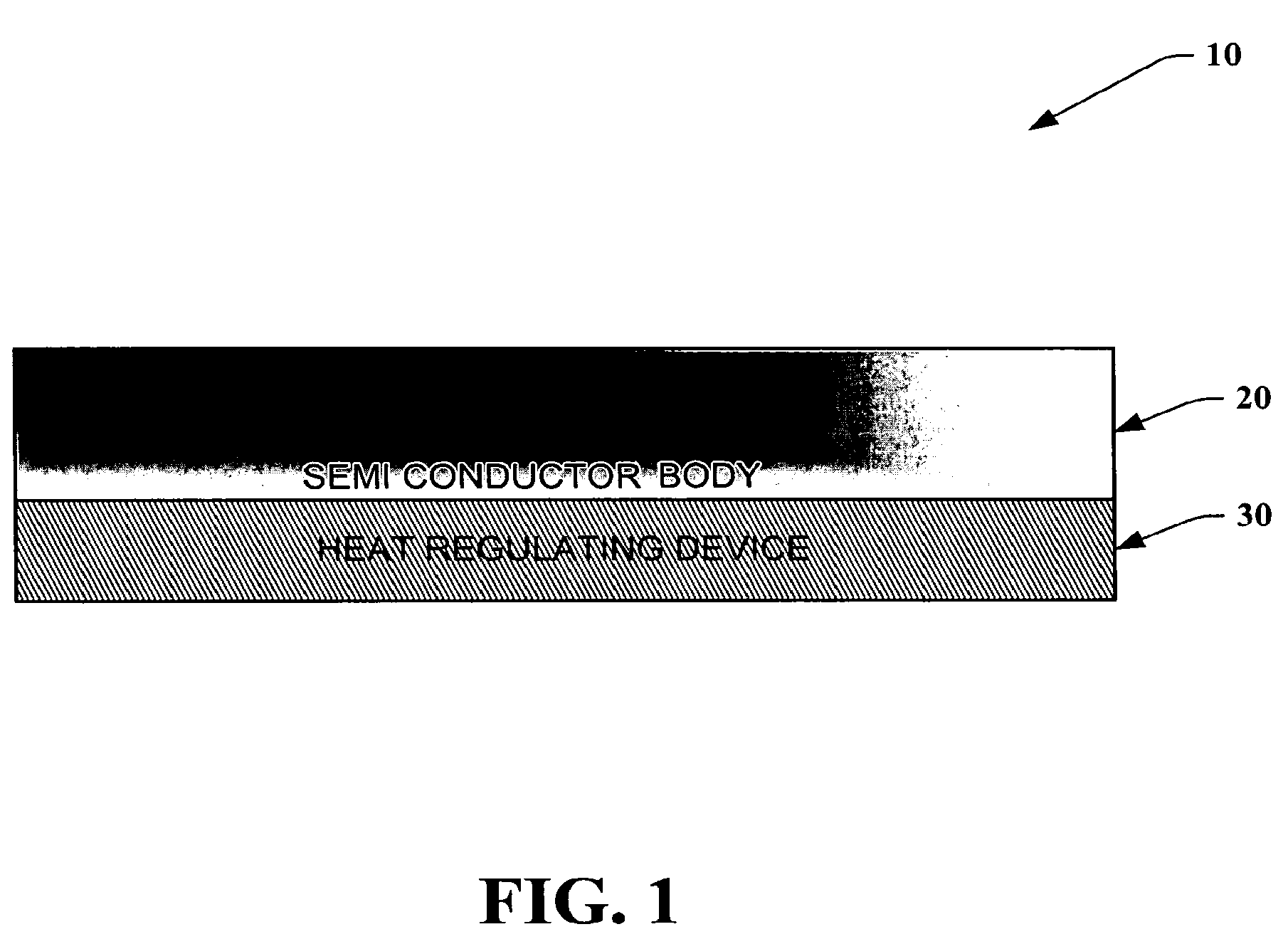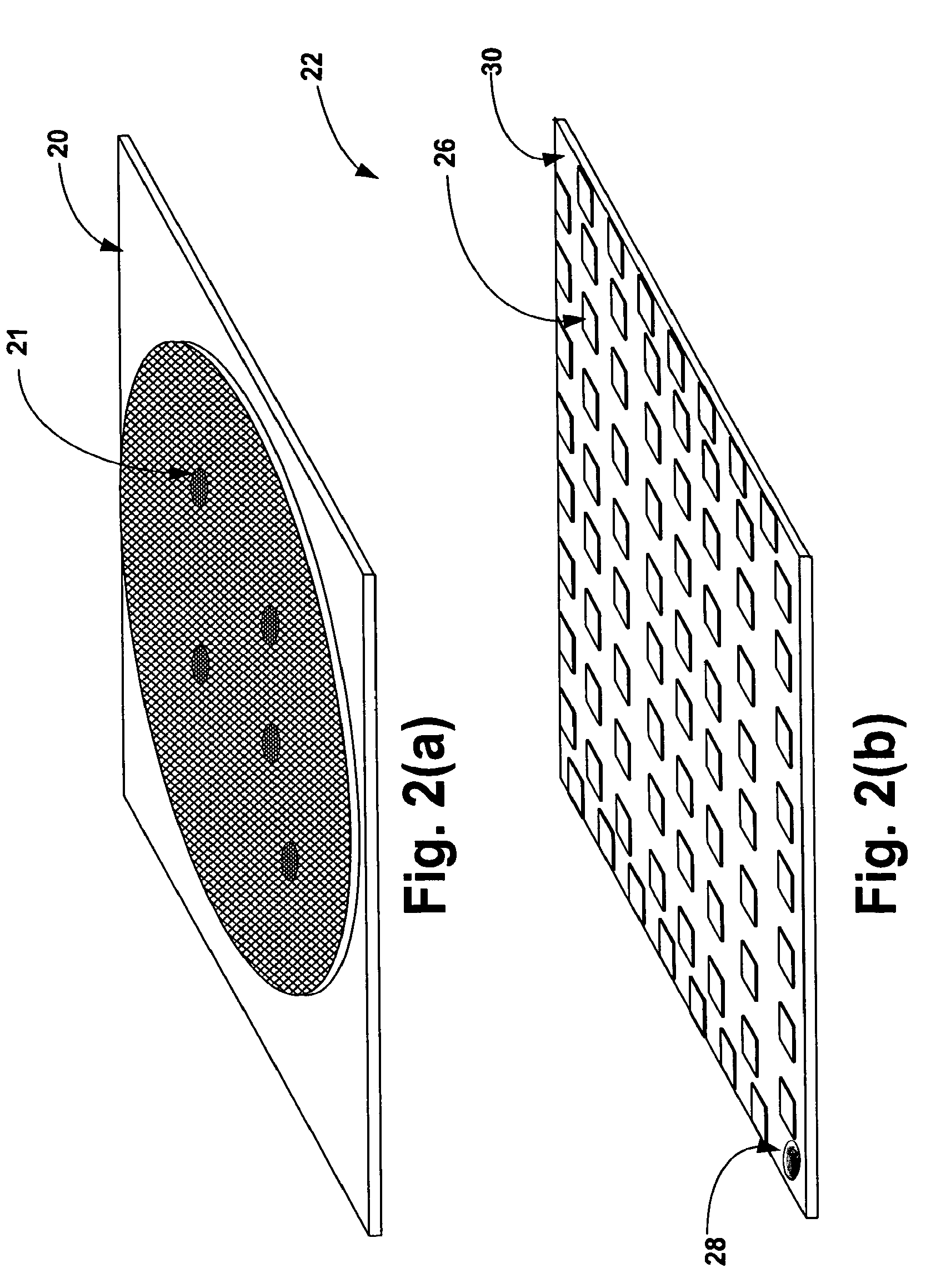Mitigating heat in an integrated circuit
a technology of integrated circuits and heat dissipation devices, which is applied in the direction of machines using electric/magnetic effects, applications, lighting and heating apparatus, etc. it can solve the problems of increasing the size of associated integrated circuits, affecting the efficiency of the integrated circuit, and high device temperatures, so as to reduce accumulation and concentration of stress, uniform temperature gradient, and dissipate heat
- Summary
- Abstract
- Description
- Claims
- Application Information
AI Technical Summary
Benefits of technology
Problems solved by technology
Method used
Image
Examples
Embodiment Construction
[0029]The various aspects of the present invention will now be described with reference to the drawings. The invention provides a system and methodology for regulating and monitoring heat dissipation of a semiconductor device, by employing an assembly of thermo-electrical structures that in part form a heat regulating device.
[0030]As used in this application, the term “computer component” or “system” is intended to refer to a computer-related entity, either hardware, a combination of hardware and software, software, or software in execution. For example, a computer component may be, but is not limited to being, a process running on a processor, a processor, an object, an executable, a thread of execution, a program, and / or a computer. By way of illustration, both an application running on a server and the server can be a computer component. One or more computer components may reside within a process and / or thread of execution and a component may be localized on one computer and / or d...
PUM
 Login to View More
Login to View More Abstract
Description
Claims
Application Information
 Login to View More
Login to View More - R&D
- Intellectual Property
- Life Sciences
- Materials
- Tech Scout
- Unparalleled Data Quality
- Higher Quality Content
- 60% Fewer Hallucinations
Browse by: Latest US Patents, China's latest patents, Technical Efficacy Thesaurus, Application Domain, Technology Topic, Popular Technical Reports.
© 2025 PatSnap. All rights reserved.Legal|Privacy policy|Modern Slavery Act Transparency Statement|Sitemap|About US| Contact US: help@patsnap.com



